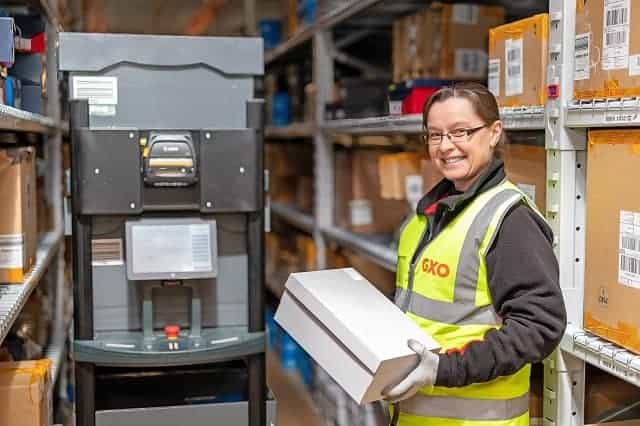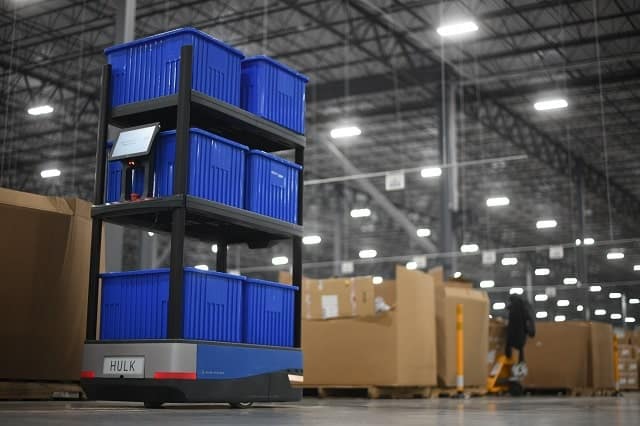
E-commerce is here to stay and continues to impact consumer expectations and buying behavior. As the number of buying channels, online shoppers and customer orders continue to rise, companies need to deploy solutions, strategies and innovations to better manage their fulfillment process.
While still adapting to the reverberating effects of the pandemic on global supply chains, brands need to meet customer expectations. Otherwise, they risk losing their customers to more agile competitors. A great way to achieve this while remaining profitable is by improving fulfillment management operations so that the fulfillment process flows seamlessly from start to finish.
Why is fulfillment management important?
Order fulfillment has a significant impact on the customer experience. Effective order fulfillment promotes customer satisfaction and loyalty, bolsters your brand reputation and cultivates customer advocates. When done right, fulfillment management facilitates seamless execution of order picking, packing and other inbound/outbound logistics activities. It also ensures inventory is kept at optimal levels to satisfactorily fill customers’ orders without incurring high storage costs or overstocking inventory with low turnover.
Since supply chain disruptions (due to COVID) severely impacted the ability of suppliers to get inventory as needed, many businesses coped by realigning their fulfillment management strategy with current realities. They began to shift from Just in Time (JIT) lean inventory to Just in Case inventory (JIC) — to minimize the chances of falling behind production schedules or running low on goods required to fulfill orders on time.
Delivering on your brand promise with an efficient, transparent order fulfillment process not only impacts customer satisfaction, but it also affects the company’s bottom line: You’ll reduce unnecessary expenses (such as long-term storage costs for slow-moving inventory) while also earning repeat business from customers who appreciate prompt, seamless order fulfillment.
To help you achieve and surpass these objectives, let’s take a look at six ways to improve fulfillment management.
1. Identify inefficient processes
Identifying inefficient and redundant fulfillment activities is a great way to kickstart your improvement efforts. Outdated technology, siloed operations, slow restocking, inaccurate inventory and the use of the wrong picking methods can result in lost sales, high operating costs and a steep decline in customer satisfaction metrics.
Of all these, inaccurate inventory can do the most damage to your fulfillment operations. It negatively impacts your ability to store, pick, package and ship out customers’ orders accurately and on time. A lack of accurate, real-time inventory monitoring could also cause stockouts, deadstock and backorders. One way to resolve this is to consolidate inventory across all channels by deploying warehouse and inventory management software. These solutions can help facilitate efficient inventory replenishment processes and real-time data integration from every aspect of your fulfillment operations.
Optimizing picking operations also improves fulfillment management. Even the smallest inefficiencies during each phase of a picking process can significantly impact the speed, accuracy and successful outcome of your entire fulfillment operation. Review your processes, warehouse layout and available technology before choosing a picking method. Identifying and organizing top-selling SKUs in the most accessible locations (and collating similar product orders into a single pick list) can improve order processing times and efficiency.
2. Automate manual processes

Allowing workers to make decisions during fulfillment activities slows down the entire process. Lack of automation and coordination during picking activities could also increase physical strain on workers, the possibility of errors, damage to products and equipment and even accidents.
Deploying inventory management solutions, order tracking software, forecasting systems and the latest trends in warehouse automation goes a long way in resolving many of these challenges. These systems, in addition to autonomous mobile robots (AMRs) and automated pick/pack systems, can help streamline the order fulfillment process, making it easier for you to achieve fulfillment management goals with minimum hassle.
Download this white paper to learn more about why autonomous mobile robots are the future of fulfillment and deliver a bigger bang for your buck than traditional automation.
3. Outsource to competent 3PL operators
One way to avoid dealing with the hassle of fulfillment management is outsourcing your supply chain to a 3PL. A lack of industry/technical know-how, strategic partnerships, experienced personnel and infrastructure will hamper your ability to efficiently manage fulfillment operations.
Without these resources, your customers may likely experience late deliveries, damaged products and incorrect orders. This will negatively impact bottom lines and increase your workload due to the need for reverse logistics operations to correct mistakes, handle customer complaints and reabsorb returned products into inventory or dispose of products that can’t be resold. Working with an experienced 3PL is a great way to easily improve fulfillment management and gain cost/process efficiencies with minimal effort.
4. Leverage omnichannel fulfillment
Although consumers order products in small quantities, they typically order a more diverse range of SKUs than enterprise customers. This makes it more challenging to manage and collate customers’ orders, especially across several sales channels. Using omnichannel fulfillment strategies to facilitate an integrated approach to inventory management can help businesses better handle customers’ orders and improve fulfillment management workflows. Learn more about “omnichannel fulfillment.”
5. Optimize last-mile logistics
Last-mile delivery is the final and most expensive part of the fulfillment chain, accounting for nearly 40% of the entire supply chain costs. Previously seen as a necessary evil, last-mile logistics is now considered a valuable tool with the potential to enhance the customer experience.
Last-mile delivery poses several challenges: staff shortages, shipping complexities and the higher delivery costs associated with faster shipments. With more customers expecting same-day delivery (for free), retailers and e-commerce businesses must learn to work around these challenges to meet customer demands and drive positive fulfillment management outcomes. This can be done by bringing distribution/fulfillment centers closer to major customers’ markets and automating/optimizing route planning by leveraging the right route management software.
6. Improve reverse logistic operations
Fulfillment operations don’t truly end until customers have received and are satisfied with their orders. As the number of product returns continues to rise (especially during the holiday season), returns management is quickly becoming an indispensable part of fulfillment operations. Although this presents brands and 3PLs with some challenges, companies that do it right can leverage returns management to drive sales and service differentiation.
Optimizing this aspect of your operations will drive positive outcomes for other fulfillment management activities. Working with resourceful 3PL partners with returns handling expertise can help you turn returns management into a success factor for your fulfillment operations. Such partners have reliable procedures for receiving, inspecting, tracking and reallocating returned products to inventory for resale.
Achieve fulfillment management success
In today’s consumer-driven marketplace and economic landscape, e-commerce and retail stores are expending considerable resources to ensure that order fulfillment and last-mile shipment activities flow seamlessly. Silos and inefficiencies in fulfillment management can negatively impact these vital processes, thus slowing business growth, reducing profits and negatively impacting customer satisfaction.
The above steps can help you achieve fulfillment management success by reducing the time, effort, and resources spent on fulfillment activities. This leaves you free to focus on other important aspects of your business, such as reviewing operational blind spots in marketing/sales strategies and identifying opportunities for process improvement, integration and cost efficiencies.


